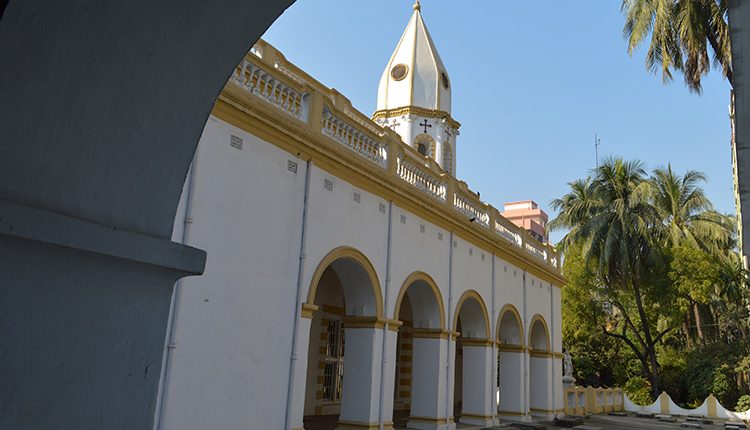By Rezaul Amin
There is a crisis in the practice of history and tradition in Bangladesh. The Armenian Church is one of the traditional structures of Dhaka. The Armenian Church at Armanitola in Old Dhaka is known as the ‘Armenian Church’. It was built in 1791. They had a small synagogue before the church was built. The history of the Armenians of Dhaka is intertwined with this traditional church.
The Armenian Church is different from all other churches. Each church has a separate tomb, but the Armenian church as a whole is a cemetery. And all those tombs are made of precious marble. The place where the church stands had an Armenian cemetery in 1781.
This 200-year-old traditional church is still maintained by the remaining Armenian families.
According to legend, four Armenians helped build the church. They are Michael Sarkis, Sivarg of Akotavata Bridge, Aga Amnias and Marker Poggs.
Geographically, Armenia is located in the South Caucasus. The name of the capital is Yerevan. A lake in the middle of Armenia; The name is Seven.
It is not known when the Armenians came to Dhaka, but it is thought that during the Mughal period, many began to come from home and abroad to change fortunes. Probably in the seventeenth century, Armenians also came to Dhaka one by one and settled in this region. Since then the region has been known as Armanitola.
The most famous and influential Armenian families in nineteenth century Dhaka are Poggs, Aratun, Paniati, Stefan, Lucas, Koza Michael, Manuk, Herni, Sirkor and Sarkis.
Despite being a very small community in the first half of the eighteenth and nineteenth centuries, the Armenians were quite influential in the city of Dhaka. Because of this, they had wealth. In the eighteenth century, the salt business was the exclusive domain of the East India Company. The company hired contractors to produce and distribute the salt. Most of the salt contractors in East Bengal were Armenians. In addition to contracting, they were in control of the betel, jute and cloth business. Many also had zamindari.
The basis of their wealth was zamindari and business. Being a foreigner can also be a reason to buy zamindari – to achieve aristocracy and to be at the top of society.
These rich Armenians built all the palace-like houses for their stay in Dhaka. For example, the present Ruplal House in Farasganj belonged to Aratun. Manuk lived in Sadarghat. The house currently owned by Bafa was owned by Nicky Poggs. Later, Mr. Nicky’s factory was built in Armanitola. Stephen’s house was on Anandraya Street. The Paniati building was where the Taj Mahal cinema is located. In the middle of the nineteenth century, many Armenians turned to business. The businesses are tea, wine, European goods, banks, etc. In 1856, Sirco introduced the first horse-drawn carriage in Dhaka, which was known as ‘Thika Gari’. Within a few days, this business became quite frozen and over time it became the main vehicle of Dhaka.
From the beginning of British rule, the number of Armenian communities in Dhaka has been declining. At present, it is said that there are eighteen families of Armenian descent in Dhaka. However, the number of Armenians in Dhaka was never very high.
The church is seven hundred and fifty feet long, with four doors and seven windows. Next to it was a clock tower. It was built by Johannes Caru Piet Sarkis. The clock is said to have collapsed in the 1897 earthquake. The church had a large-sized bell. This famous bell of the Armenian church came to a standstill in the 1880’s, which never rang again. The sound of the bell was heard from almost all parts of the city. After hearing the sound of this bell, most of the people of Dhaka would fix their time.
After their deaths, Armenians in Dhaka were buried in the premises of Armenian churches. Due to the small size of the courtyard, the entire courtyard of the church and even the verandah floor has a lot of tombstones. Most of the memorials quote from the scriptures.
The whole church is surrounded by the graves and graves. All the graves are bound with various precious stones, including white stones. Moreover, various designs of flowers and birds, including the name of the deceased person and writing something poetic on each grave for the purpose of the deceased person by pouring emotions.
Preservation of this traditional architecture now requires the sincere attention of the appropriate authorities.
* Rezaul Amin: Dhaka-based culture and lifestyle writer, Social Activist










